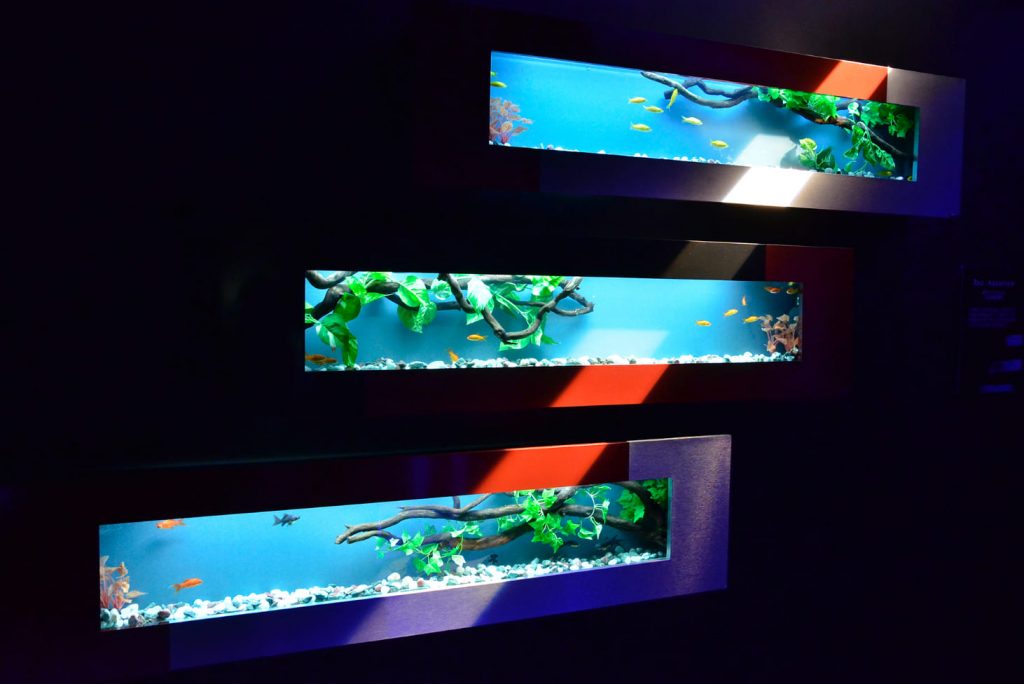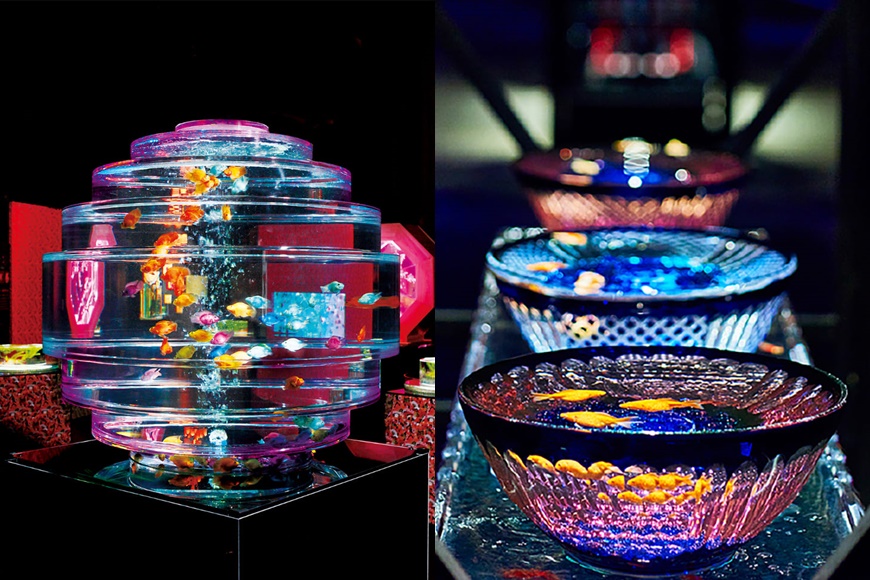The theme of the light and shadow exhibition is ever-changing, even “goldfish” can be the “protagonist” of this dreamy art! The “Goldfish Art Exhibition” at the Art Aquarium Museum in Tokyo, Japan transforms glass tanks into a beautiful space similar to teamLab, with up to 30,000 goldfish swimming gracefully under light, shadow, and music, creating a dreamy and spectacular atmosphere!
Watching goldfish is a traditional cooling culture in Japan’s Edo period, and since 2011, Japan has been holding exhibitions themed around goldfish every summer, which have been selected by the Japanese government as representative works of local art. The goldfish art exhibition is led by aquarium artist Kimura Hideki, showcasing the traditional Edo period fish viewing and cooling culture through unique lighting and cutting-edge technology. Artists like Yuki Kanzaka will vividly present the posture of goldfish, revealing a unique beauty and releasing vitality.

This art exhibition allows visitors to enjoy a variety of goldfish species, including rare ones. The designs of each fish tank are thoughtful, with shapes like spheres, lotus flowers, triangular columns, and even kimono styles, showcasing traditional Japanese art in the details and presenting stunning exhibits. Under the changing lights, the goldfish appear even more dazzling, emitting a brilliant shimmer from their scales. Appreciating the art of goldfish involves not only the visual aspect but also a comfortable atmosphere with music and scents, creating a multi-sensory experience to feel the unique Edo cultural atmosphere!

The exhibit “Super Oiran” is the largest piece in the goldfish art exhibition, consisting of 17 aquariums surrounding a giant goldfish tank in the middle. 3,000 goldfish swim in the tank and aquariums, along with projected dreamy colors and a trickle of water flowing from the tank, creating a beautiful scene reminiscent of the women of the Edo period.

“The Earth Aquarium: Japanese Aesthetics” symbolizes the earth with a huge spherical water tank with a diameter of 1.5 meters, where beautiful koi fish swim freely, as if floating in the universe, giving a sense of ethereal beauty.

Every corner inside the venue is a colorful and vibrant photo spot! Just look up, and you can admire the artwork “Tendon Goldfish”! Legend has it that wealthy merchants in the Edo period would embed glass tanks in the courtyard so they could admire goldfish with just a glance. The exhibit “Tendon Goldfish” took 5 years to conceive, bringing this legend back to life.

The lotus, which emerges from the mud but remains unstained, is a flower that belongs to summer. It blooms after overcoming numerous difficulties, and on the fourth day after blooming, it will wither. The fleeting brilliance symbolizes the beauty yet impermanence of life, while the elegant koi adds magnificence and vitality to this lotus flower, prompting reflection on life.

In the “kimono” watermarks, goldfish swimming freely have become unique patterns on clothing, allowing kimonos to take on different “styles” with their elegant and charming postures.

Due to the pandemic, it is unknown when we can fly to Japan to see the highly anticipated goldfish art exhibition. However, this originally limited-time exhibition has become a permanent exhibition starting from August this year, and the exhibits will change according to the seasons. So don’t be disappointed, add this must-visit spot to your itinerary now and set off after the pandemic.
Image source: artaquarium.jp

